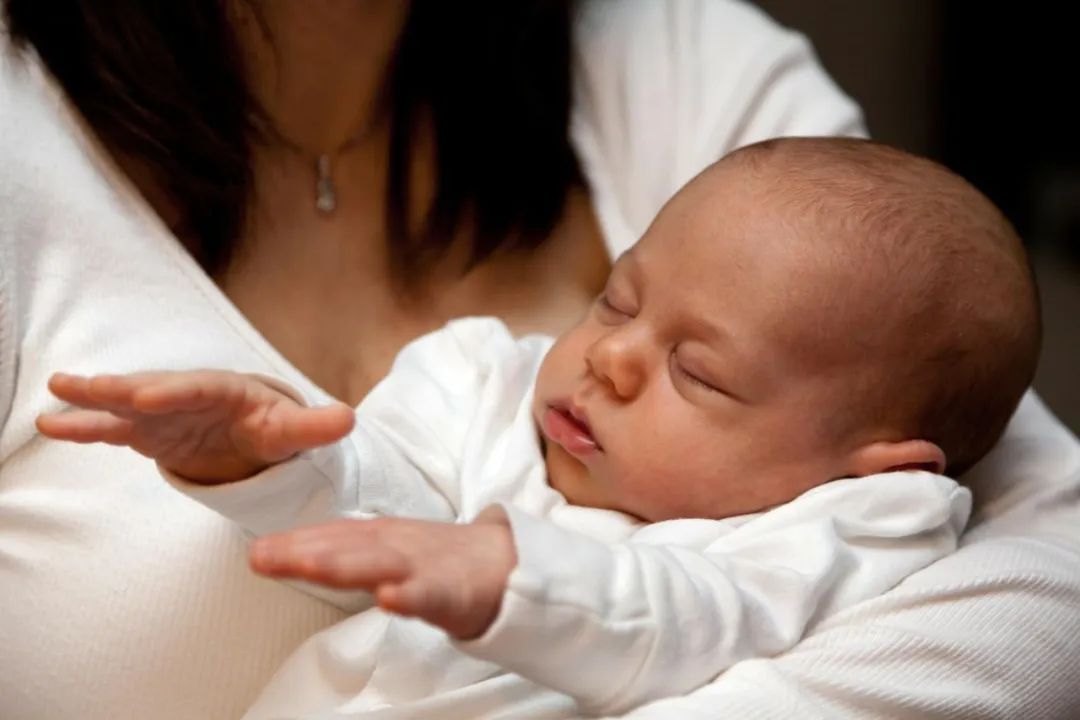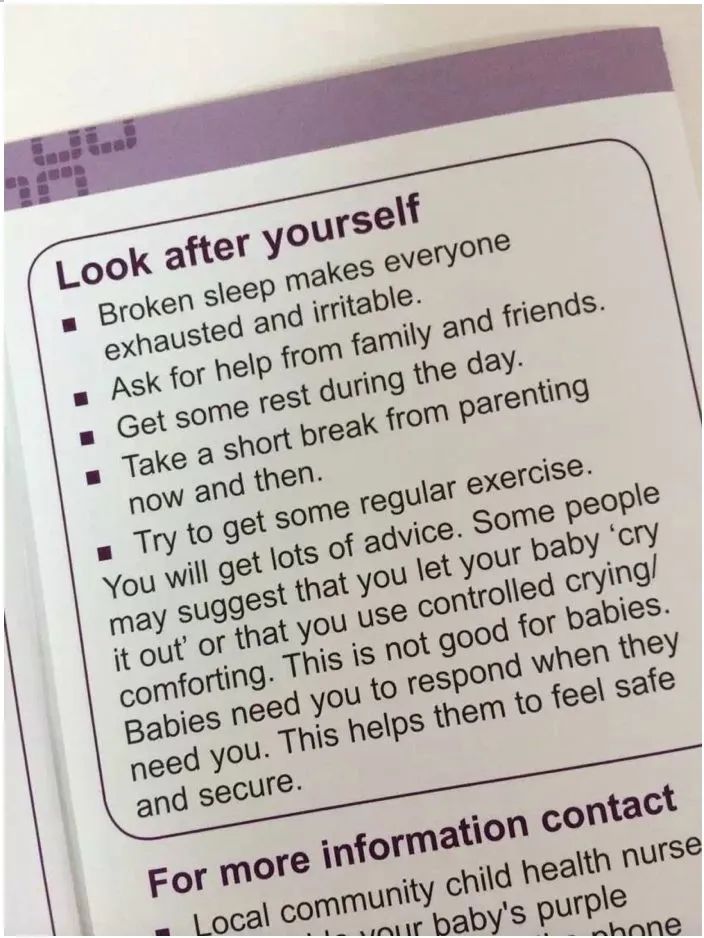Does your child need sleep training?
It is difficult for babies to fall asleep, they wake up frequently, or they have to be cuddled, slept with milk… The sleep problem of babies is an eternal pain for novice mothers. The proposal of sleep training has made many people see it in despair. A glimmer of light. Searching for posts about sleep training on the Internet, a lot of titles are written that really make people want to try, such as “It took three days for a baby to sleep on his own”, “It is so easy for a 2-month-old baby to fall asleep on his own.” , “A little trick to make babies fall asleep within 30 minutes without coaxing or hugging.”
But the question of whether sleep training works is really like reading Hamlet. There are a thousand children, and there are a thousand kinds of feedback on sleep training. Today we put aside the personal experience of parents and try to speak with data.
Perhaps the biggest impression of sleep training is probably the most controversial Cry It Out method (CIO).
Simply put, CIO method encourages babies to fall asleep on their own without the help of others (including when waking up at night), by limiting or altering the parent’s response to crying. In this way, parents can stay with the child, but not soothe the child in any way, such as picking up or feeding the baby. As long as the baby is not touched or comforted, parents can enter the room to check the child’s sleep status at intervals, or simply lock the child in the room and let them sleep on their own.

The idea has become so popular in a short period of time that six out of ten parenting books in the United States recommend that parents adopt some form of Cry It Out method. Surveys in Canada and Australia and those in Switzerland and Germany showed that half and one-third of parents had tried the Cry It Out method, respectively.
There have been many related studies on the effect of sleep training, but many experiments can not fully meet the scientific research standards.

A search of MEDLINE, Web of Science, and PsychINFO for articles published between 2007-2017 on prevention and therapeutic interventions for infant sleep problems found only 12 research articles on the effects of sleep training out of 476 that met the following criteria.
- Intervention and control groups intervened with sleep goals
- The intervention and control groups should each contain at least 20 infants
- Most children in the study groups were under the age of two
Because the fact that a child falls asleep is very subjective and depends entirely on the parents’ own feelings, most of the relevant research data are questionnaires or sleep diaries filled out by parents, rather than using objective methods to determine when the baby is awake or asleep.
And the Hawthorne effect (the tendency for people to change their behavior knowing they are being observed) makes parents more inclined to report positive results and feedback.
At the same time, parents often give up sleep training halfway, and there is no way to strictly enforce the requirements.
Therefore, many of the claims that sleep training is effective are based on such very imprecise and unqualified experimental data.
In 2015, Canadian paediatric sleep expert Wendy Hall conducted a sleep study of 235 infants aged 6-8 months to see whether the infants needed sleep training.
- To keep the data as authentic and reliable as possible, half of the parents adopted the so-called “CIO” approach, and for those parents who couldn’t bear to leave their children alone in the room crying, the researchers suggested they use “Ferber” method, which is considered to be a gentler option, since it involves periodically checking in on your baby when she’s crying.
- Parents in both groups received some sleep instruction for infants and toddlers, and parents in the experimental group learned about infant sleep, such as reducing daytime sleep to help nighttime sleep. Parents in the control group learned about infant safety.
- In addition to recording sleep diaries, exercise recordings were also included in this study to assess subjects’ sleep-wake patterns through wearable actigraphy.
Does sleep training work?
When researchers compared sleep diaries, they found that sleep-trained parents felt their babies were waking less at night and sleeping longer.
Actigraphy found that sleep training did improve a measure of infant sleep — longest sleep duration. This metric improved by 8.5 percent, with sleep-trained infants achieving a maximum sleep time of 204 minutes, compared with an average of 188 minutes for untrained infants.
That’s 16 minutes longer! And just 16 minutes! !
But whether sleep training really gives children high-quality sleep is not necessarily the case. There was no substantial difference in sleep quality between sleep-trained infants and non-sleep-trained infants.
While parental feedback in the experiment showed that babies were awake for less time at night, the sleep-wake analysis charts showed that sleep-trained babies woke up as often as the control group. After six weeks of sleep training, there was no significant difference in the length or number of sleep-wakes between sleep-trained and control infants. In other words, after sleep training, parents thought their child was waking up less, but objective sleep monitoring showed that the baby was still waking up, they just learned to stop crying to wake the parents up. And the success rate of sleep training in real life will be much lower than the experimental data.
Survey data suggest that sleep training is not effective for all children. In a Canadian survey, only 14% of parents reported that CIO method helped them stop waking up all night to care for their children, and almost half thought it had no effect at all.
Many of the conclusions claiming that sleep training is effective are the results of studies drawn by sleep training centers, that people who conduct these trials have a stronger mindset of success, and that subjects “work harder” to participate in sleep training experiments. These will make experimental data much more beautiful than real life.

One study compared the training effects of CIO and Ferber methods in 8-month-old infants. The questionnaire results showed that not all mothers believed that sleep training actually helped babies sleep better. Sleep training was found to be effective by 84% and 49% of mothers in the two groups using the CIO and Ferber methods, respectively.
And moms who thought sleep training helped also found that the training effects didn’t necessarily last. Two months after sleep training ended, 56% of sleep-trained and 68% of untrained infants still had sleep problems; four months later, 39% of sleep-trained and 55% of untrained infants still had sleep problems.
Not only does this mean that sleep training may not be suitable for all children, it also means that even for those families who find sleep training effective, training needs to be repeated to maintain the effect.
Is sleep training beneficial?
Do babies stop crying because they have learned to “self-soothe”, or do they still need the care of adults, just knowing that no matter how much they cry, no one will respond? There is no clear data yet that children experience stress from sleep training.
But we should take into account that the baby’s brain is still developing, and its brain function obviously has limitations.
Throughout infancy and toddlerhood, a baby’s brain often needs to be “co-regulated” (that is, under the comfort of an adult) to calm down. The American Academy of Pediatrics and the National Science Council on Child Development define a “positive stress response” as a “transient, mild to moderate” stress response that requires “a caring and responsive adult to help the child relieve stress and thereby help the child’s well-being. The stress response system returns to normal.”
That is to say, children need us.
When my two children were young, every time they showed that they needed me, I was the first to run to their side and try my best to satisfy their dependence on me. I felt that as long as they needed me, I was there .
Studies on sleep in infants and young children have come to similar conclusions. One study found that 3-, 6-, and 9-month-old infants being soothed after waking up at night led to lower cortisol levels. Another study also found that babies who were emotionally responsive at bedtime (including being comforted within a minute of crying) had lower cortisol levels than babies who lacked emotional support.
In this regard, the researchers wrote:
“Because infants may be particularly tired before bed, they have a reduced tolerance for stress and need extra help to regulate their emotions. Parents’ reassurance and a quiet, safe environment can help babies fall asleep, which is likely to be linked to the baby’s mood. regulatory processes, such as cortisol secretion.”
Numerous studies have also shown that infants receiving external emotional support contribute to “language, cognitive and psychosocial development”. Well-cared-for children learn language faster, are less prone to behavioral problems, are less aggressive, have higher intelligence, and feel more secure.
For babies who can’t speak yet, crying is their primary way of communicating with the outside world and waking up their sleeping parents, and if this line of communication with us is cut, how will we know if the child is comfortable or safe.
For parents, being woken frequently by a baby can be really exhausting, but waking up in the middle of the night is an evolutionary instinct for babies to ensure safety and health. From an evolutionary perspective, infants often wake up in their sleep for nourishment, comfort and protection, and to reduce the risk of sudden death.
Are there risks to sleep training?
While many parenting manuals include sleep training such as controlling crying, sleep training isn’t as casual as letting your child try new fruits and vegetables, and it’s a process that requires careful consideration. Most sleep research experts also recommend that parents should not try it lightly.
Starting sleep training too early can be detrimental to children, and under any circumstances is not recommended for parents to sleep training infants under six months of age.
Small babies can’t afford sleep training because they don’t yet understand object constancy, the disappearance of mom and dad from view is equivalent to disappearing from the world, and doing so will hurt the child psychologically
Many institutions or educational books start to guide sleep training without understanding what children need, telling parents some training guidelines that seem to be golden rules, but they have no idea what impact these training methods will have on children.
A study of sleep training over the past 20 years pointed out that there is no scientific basis for sleep behavioral interventions in the first six months, because it ignores the problem of infant feeding, and there is also a subjective perception bias in the interpretation of the data, which cannot be proved. Strategies can reduce crying in babies, avoid sleep and behavior problems in children, or prevent postpartum depression.

In addition, children who are more vulnerable to psychological harm are not suitable for sleep training, such as babies who have experienced psychological trauma, have been in foster care, or have more anxiety-sensitive personalities. In addition, lactation experts advise breastfed babies to wait until after six months of sleep training, as premature weaning may result in reduced breast milk production.
In more severe cases, it can lead to more crying, premature weaning, increased maternal anxiety, and increased risk of sudden infant death syndrome (SIDS) caused by sleeping alone in the room.
The reason why sleep training is so popular and even considered a necessary training, in addition to parents wanting to get a good night’s sleep, is that these institutions and books tell them that as long as they try sleep training, the baby can sleep better and longer.
Falling asleep independently is not a required skill
Children are not electrical appliances or IKEA furniture. As long as they are operated safely against the instructions, you can get the correct result. The fact is that every child is different.
Children’s innate temperament differences also determine whether sleep training is effective to a certain extent. Some families find it very effective, and the children can fall asleep quickly, while some families don’t work at all. The child should cry. Cry, for at least a few hours. We must admit that such differences exist, and sleep training is not a panacea.
Many studies have found that the more actively parents respond to their baby’s sleep needs, the later the baby will learn to fall asleep independently. So many parenting manuals simply and rudely translate it as: We must get babies used to falling asleep alone, or sleep training them to learn to fall asleep on their own. But have we ever thought that it is very likely that because some children need to be coaxed to sleep themselves, they always need parental comfort to fall asleep.
The child needs to be coaxed to sleep, and it is easy to wake up at night. It is not the fault of the child, not the fault of the parents, but that he is such a baby. Part of the reason many families are so desperate to get their kids to try sleep training is because they’re developing sleep alone as a skill they want their kids to master as quickly as possible.
Falling asleep is a state that is constantly changing with age, environment, and personality. Sometimes children can fall asleep completely peacefully in the nursery, but not at home, and sometimes they suddenly don’t sleep well after a few months of sleep. Many people still have bed recognition, insomnia, and various sleep problems in adulthood. If we insist on sleeping as a skill, it’s better to train them within the limits of what children can accept, rather than driving them to a breakdown.
How does it count as a breakdown? I think the range that your baby can accept should be the range that your mother’s instinct can accept. The baby can’t speak, only you, as a mother, judge for yourself whether your baby is crying and crying, from disappointment to despair.
How to save parents’ sleep?
While sleep training is most concerned with the potential impact on the baby, it is clear that other family members can have a significant impact as well.
The impact on parents is also polarized:

Many parents find CIO methods “very stressful” for themselves and their children. It’s a parent’s nature to comfort my child when they cry, but sleep training tells us not to, and we watch our child cry in bed in the midst of this ordeal.
But many people also feel that sleep training can greatly improve parents’ mood and sleep quality. Hall’s results also show that sleep training is more likely to save parents’ sleep than to save children’s sleep. Parents who did sleep training reported feeling more positive, sleeping better, and feeling less fatigued.

There was no significant change in sleep activity in infants with or without sleep training, but parents felt very different—after six weeks of sleep training, only 4% of sleep-trained parents and 14% of control parents believed that their children sleep disturbances remained severe, but the sleep-training group had significant improvements in fatigue, sleep quality, and depression.
A lot of sleep training is telling exhausted parents “what you have to do to teach your kids to sleep on their own so you can feel better”. But what parents really need is strategies to help babies sleep better and save our own sleep and mental states before they break down.
In the parenting materials distributed by the Australian government, there are instructions on how to give parents a breath:


- Fragmented sleep leaves everyone exhausted and irritable.
- Ask family and friends for help
- Take a break during the day
- Give yourself a break from time to time
- Try to exercise regularly
In addition to the more extreme method of CIO, we try some other methods to help children fall asleep.
For example, let the baby sleep in the same bed with the mother in a safe environment; take a bath, massage, apply lotion before going to bed, and develop sleep habits.
There are also many ways to coax sleep, such as slings, slings, breastfeeding, singing, holding and walking gently, going up and down the stairs, strolling in a stroller, baby cradles, soft white noise, pacifiers, pacifiers… (Most methods are sleep book prohibited),just try it.

Seeing this, parents with sleeping issue babies at home may still question: what if they have tried all these and still don’t work?
My answer is: let go, hold on, everything will get better and better.
Sometimes parents may just need someone to tell them: Not every child will fall asleep on their own, every child is different, and it’s not your fault. Please let go of inexplicable obsessions such as “must learn to fall asleep independently”, “don’t wake up at night”, “no need to accompany you when you wake up at night” – who said babies should learn to fall asleep independently? !
Every child has a different sleep personality. I definitely don’t advocate a single rough sleep training. Only after slowly understanding the child’s sleeping habits, will you begin to understand him and accept his sleep temperament, and eventually we will all have one. Set your own “sleep rules”.

